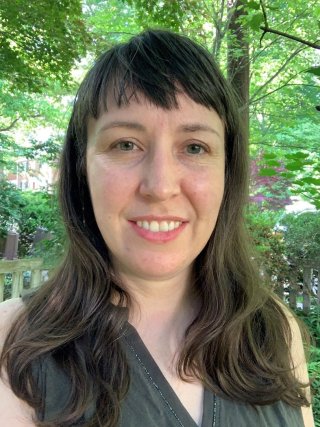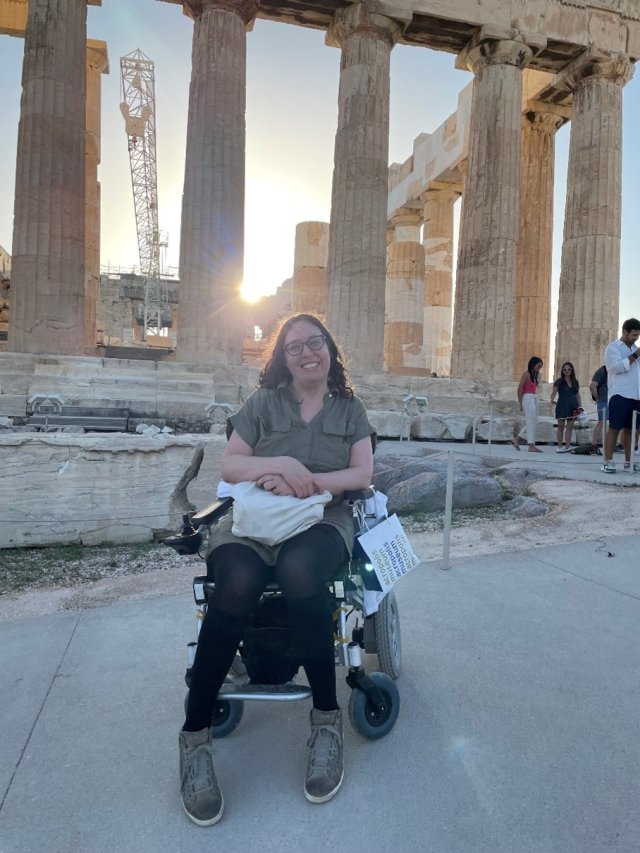Meet EPA Epidemiologist Rebecca Massa Nachman, Ph.D., MPH

EPA epidemiologist Rebecca Nachman works on health assessments for EPA’s Integrated Risk Information System (IRIS) program. She contributed to the recently finalized IRIS assessment of hexavalent chromium and currently is working on IRIS assessments of methylmercury and ethylbenzene. She also recently took the lead on a systematic review of the literature that aims to improve estimates of potential exposure to harmful chemicals in the environment from dietary intake of fish and other aquatic biota among communities that practice subsistence consumption (i.e., rely on natural resources like aquatic biota for dietary intake). Subsistence consumption of aquatic biota has cultural significance to many communities including, but not limited to, indigenous groups. Improving these rate estimates will help inform EPA decisions to protect the most at-risk communities.
Tell us about your background.
I completed a Ph.D. in environmental health sciences at the Johns Hopkins Bloomberg School of Public Health. For my doctoral research, I investigated early life toxicokinetics of the chemical bisphenol A in a group of newborns using urinary biomarkers. Later I was a postdoctoral fellow in the same department where I had been a student. I continued to study early-life exposures to environmental pollutants, but my postdoctoral research focused on the developmental effects of exposure to air pollutants such as particulate matter. I studied these effects through an analysis of data from the Boston Birth Cohort, a prospective birth cohort study founded and led by Dr. Xiaobin Wang.
When did you first know you wanted to work in environmental science?
I first became interested in environmental science when I was in high school. At that time there was a great concern over depletion of the stratospheric ozone layer. I became interested in applying the fundamentals of chemistry to solve environmental problems.
What do you like most about your job?
I like that I get to combine two great interests of mine: scientific inquiry and protection of human health and the environment. In my job I am always applying my training to new problems and situations, which means I continue to learn. I also like being able to work on an interdisciplinary team in which each person brings an important type of expertise. The commitment and talent of my coworkers is very inspiring.
How does your science matter?
Much of the work I do involves reviewing evidence from observational studies, a type of epidemiology study. In these studies, people are not intentionally exposed to anything, but researchers use creative methods to determine whether some people are more exposed to a chemical than others and whether the rates of disease are different between different groups of people depending on their exposure level. This kind of evidence brings a crucial perspective to EPA’s health assessments because it represents what is happening to real people in real life scenarios. Data from epidemiology studies can sometimes be used to directly calculate a level of an environmental chemical that is protective of health. Other times evidence in these studies is combined with data from other types of studies like toxicology studies or mechanistic studies in order to make public health decisions.
If you weren’t a scientist, what would you be doing?
If I were not a scientist, I would do some sort of music-related work. Music has been a life-long hobby of mine. At various times in my life, I have studied instruments and played in a few informal groups. I started out playing the piano and later on I learned to play the drums. I’d like to learn to play guitar.

What advice would you give a student interested in a career in science?
My biggest advice is to not overthink it and don’t be scared to try something difficult. The important thing is to do something and see where it takes you. My first scientific interest was biochemistry. However, I realized that though I was fascinated by the subject, I was not a fan of spending time in a lab. My first exposure to the subject of epidemiology was through a job early in my career at a university, after college but before I went to graduate school. I took a class in epidemiology taught by the legendary Dr. Leon Gordis and was surprised to find that I loved it. Even though my scientific career ended up going in a different direction than I first expected, I still draw on my initial foundation in biology and chemistry, which shows that every experience can be valuable in ways you never imagined.
If you can have any superpower, what would you choose?
Honestly, limitations are my superpower and I would not change that. The limits of our knowledge are what energize us and inspire us to discover new things.
What do you think the coolest scientific discovery was and why?
I’m astounded by the creation of the periodic table long before the discovery or confirmation of the existence of subatomic particles. I grew up having access to illustrations and 3D models that show how chemical bonds form through the attractive forces of protons and electrons. This kind of information has been integral to many of the public health problems I have worked on. It amazes me that people could have organized the elements into a visual form based only on their properties and that it turned out to match up perfectly with information about their physical structure that was discovered much later.
If you could have dinner with any scientist, past or present, who would you choose and what would you talk about?
I would like to sit down and talk with Sir Bradford Hill, the creator of the Bradford Hill criteria for causality. These criteria were developed to assess whether a body of evidence from epidemiology studies demonstrates a causal relationship between an exposure and a health outcome. The criteria have become the basis for drawing conclusions about whether an environmental pollutant is harmful to human health. Many EPA health assessments refer to the Bradford Hill criteria directly or indirectly. I would like to ask Sir Bradford Hill whether he could have imagined that his criteria would have had such far-reaching influence on public health. I would also like to ask him why he has two last names.
Editor's Note: The opinions expressed herein are those of the researcher alone. EPA does not endorse the opinions or positions expressed.
